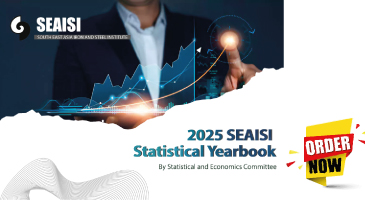The author is an analyst of NH Investment & Securities. He can be reached at will.byun@nhqv.com. -- Ed.
We hold a Neutral stance towards the steel industry. While China’s steel prices have rebounded on an unleashing of pent-up demand, annual sessions of the NPC and CPPCC in May, and expectations for a resumption in economic activity, concerns over the Covid-19 pandemic and accompanying economic slump remain a threat.
Despite weak demand, China’s crude steel output has increased y-y, possibly backed by difficulty in adjusting utilization rates at steel mills and government efforts to bolster employment. Despite having shrunk somewhat, steel inventory remains above the normal level. Although governments around the world are injecting liquidity and cutting interest rates, we note that steel prices slid during previous periods of low interest rates and deflation. Accordingly, we believe that it is premature to invest in steel stocks based on valuation merit alone.
We recommend Korea Zinc as our sector top pick. In addition to boasting stable financials (net cash of W2tn), Korea Zinc is likely to benefit from rising silver prices. And, its new rechargeable battery electrolytic copper foil business is further brightening its long-term growth outlook.
Following slight rebound, steel price decline to resume
In China, steel prices have been rising since May, backed by the easing of Covid-19 and expectations for economic stimulus. Having fallen on the suspension of downstream industry activity amid the pandemic, steel prices are rebounding on resumption in economic activity and expectations for economic stimulus packages. With concerns lingering towards the coronavirus, economic indicators such as unemployment and GDP growth are likely to deteriorate. And, anxiety over worsening US-China relations bodes ill for steel prices. We expect that any further steel price rebound will be limited, believing that it will take some time before actual steel demand picks up.
China’s rising infrastructure investment insufficient to prop up steel market
In China, excavator sales volume reached a monthly high of 49,400 units in March (vs 45,400 units in April). In light of a 332% y-y upsurge in the aggregate amount of infrastructure investment projects submitted for approval by the State Development Planning Commission (SDPC) in March (vs +209% in April), China’s infrastructure investment looks set to accelerate. The rate of new infrastructure investment (eg, in 5G, EVs, etc) out of China’s total infrastructure projects has increased as of late.
China’s infrastructure investment is projected to climb 8.0% y-y to W19.7tn this year. Real estate and manufacturing investment should expand 6.5% and 3.1% to W17.6tn and W22.6tn, respectively. Accordingly, fixed-asset investment growth is likely to reach 5.7%, continuing to hover around the 5~7% level witnessed since 2017.
With supply remaining intact, inventory burden to stay put
Although both economic activity and steel demand have weakened amid the pandemic, China’s steel production has remained intact. Over January~April, the country’s crude steel output rose 1.3% y-y to 31.87mn tons. China’s steel distribution inventory came to 15.49mn tons on Mar 13, down 40.4% from the yearly high but up 40.2% y-y. Company inventories had also expanded 17.3% y-y to 14.88mn tons. Such high inventory levels are to place a burden on steel prices. Considering both difficulties in adjusting utilization rates at steel mills and the Chinese government’s efforts to stimulate the economy, it looks challenging for the steel industry to control supply.
Ample liquidity to push up precious metal prices
During the 2008 global financial crisis, the price of gold jumped nearly 2.7x from US$721/oz on Oct 23, 2008 to US$1,900/oz on Sep 5, 2011. The price of silver skyrocketed roughly 5.4x from US$9.0/oz on Nov 17, 2008 to US$48.4/oz on Apr 25, 2011 (US$50/oz during mid-day trading). While the 2008 crisis was triggered by subprime mortgages, the 2020 crisis was caused by Covid-19; nevertheless, the two crises share a common result: ultra-low interest rates and unlimited liquidity injection by governments in order to weather the storm. While gold price growth has recently slowed on resumed economic activity and expectations for economic recovery, gold and silver price hikes are likely to continue for some time, backed by ample market liquidity.
Silver price to increase more strongly than gold price





